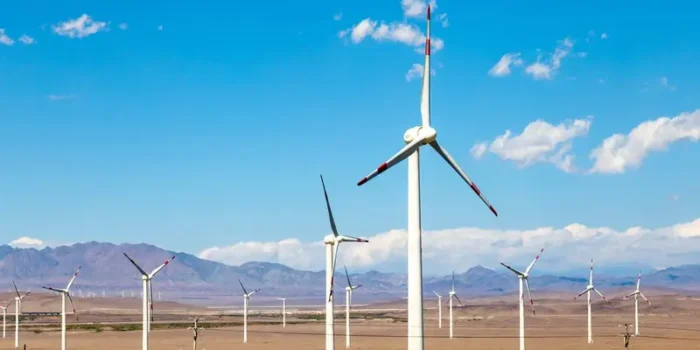It’s encouraging that the overall activist investors in the M&A market were largely stable and that the year ended with reasonably robust activity. But over the year, both deal volume and value slipped from their heights of the first quarter. And even though the first quarter held steady, the global outlook for and beyond also looks mixed volatility is on the rise. And economic and political uncertainties may be here to stay, potentially dampening M&A activity. The big bright spot is that the capital available for dealmaking is still at record levels.
One other factor deserves attention: the rise of shareholder activism. Although deals driven directly by activist investors represent a small share of the overall M&A landscape. The activist impact is growing rapidly and has spread from the US to Europe and Asia-Pacific. In addition, some companies have taken measures based on the prospect of potential activism. Given these trends, leaders of larger public companies must plan for the likelihood of activists knocking on their doors.
We’ll dive deeper into activist impact, but let’s first look at the numbers for overall M&A activist investor activity.
Still, there was a major change between the first and second halves. The year started with a flood of megadeals (transactions valued at $10 billion or more). There were 17 such deals announced in the first quarter alone. Compared with a quarterly average of six in each of the previous ten years. In contrast, overall M&A activity slowed in the second half, largely due to increased volatility in equity capital markets. Declining valuations, and lingering macroeconomic uncertainty. So it r, it is holding steady; while deal volume is down globally in the first quarter. The average deal value is slightly up compared with the past five years, mainly due to nine announced megadeals.
Just about every industry saw a decline in overall M&A volume for the full year. Counterintuitively, some industries posted increases in aggregate deal value, due to outlier effects from a few large deals. The leader in deal value was the media and entertainment sector, with a 42% increase in 2018 (although volume was down by 4%) resulting from large-scale industry consolidation. Importantly deals were US cable company Comcast’s $40 billion bid for Sky and Vodafone’s $22 billion acquisition of German cable operator Unity media.
The healthcare industry posted the second-biggest increase in M&A value. Growing 31% over the prior year (volume was up by only 3%), supported by large-scale deals such as the $60 billion takeover of UK-based biopharmaceutical specialist Shire by Takeda, Asia’s largest pharmaceutical company.
In terms of valuation, deal multiples—enterprise value divided by EBITDA. Declined slightly in 2018, to a median of about 14x. That is lower than the all-time high of 15x but still well above the long-term average of 1st. BCG’s latest analyses indicate that tech-oriented dealmaking, consolidation, and divestment will be central themes in many M&A deals. Several factors are likely to contribute further to M&A activity. Private equity firms’ “dry powder” (funds ready to invest) is at record levels, along with corporate cash holdings. In addition, interest rates remain low by historical standards, especially in Europe. And the drop in valuation levels may have narrowed the gap between the expectations of buyers and sellers.
Technology Deals
Deals spurred by advances in technology are another important theme. We still see an uninterrupted flow of transactions in which activist investor companies buy technology businesses to upgrade their digital capabilities. These deals tend to be relatively small in value. This is particularly true for acquirers in traditional industries that want to transform their businesses and develop digital business models. Examples include deals between retail players (such as Walmart’s acquisition of Flipkart); automotive OEMs investing in e-mobility technology, ridesharing, and similar digital offerings; and banks and insurers investing in fintech startups.
Divestitures
Another category where M&A activity is likely to remain strong is corporate and private equity divestments. Though not quite reaching the heights in terms of the number of deals, has been another strong year for larger corporate divestments and private equity exits—the latter now represent 8% of global M&A activity. Some management teams—often spurred by investors—are keen to shed underperforming assets so they can focus on their core businesses. Large deals, which have been numerous over the past couple of years. Can also lead to a second wave of transactions as recent buyers sell off pieces—either to address antitrust concerns or because the components do not fit with their portfolios. And some companies and PE firms are looking to sell while valuation levels are still relatively high—and before a potential further slowdown of the global economy.
Consolidation
Some industries are fueling M&A as they undergo consolidation. Activist investors Examples include chemicals; telecom, media, and entertainment; and health care. In the chemicals sector, consolidation is an ongoing theme. The same should hold for the media business, a sector that has already seen several large consolidation deals driven by US players. With Walt Disney acquiring Twenty-First Century Fox and, more recently, Comcast buying Sky.
This activity will likely lead to further consolidation pressure in other markets. As local players work to gain scale and stay competitive against large-scale global competitors and tech giants such as Netflix and Amazon. Industries that have not yet experienced much consolidation are expected to do so soon. For example, in the banking sector, deal talks have already commenced, with large European players such as Deutsche Bank, UniCredit, ING, and Commerzbank subject to plenty of merger rumors.
Rising Shareholder Activism in M&A
Activism continues to make plenty of headlines. We analyzed activist investors’ M&A deals related to shareholder activism to determine how big the issue is. Specifically, we collected a dataset of more than 2,500 activist demands globally over five years.





